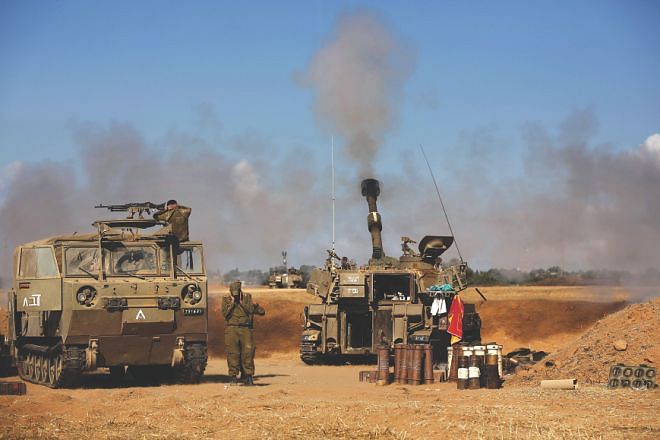'Knock on roof'
'Knock on roof'
Human right bodies criticise the deadly warning system that the Israeli forces developed to avoid human causalities

It's become another military euphemism, along with "collateral damage" and "friendly fire."
The "knock on the roof" is the Israeli military's warning for civilians before it fires on a building and is being used extensively as Israeli airstrikes target Hamas sites in Operation Protective Edge.
The Israeli Air Force developed the technique in 2009 as a way to warn civilians in Gaza to leave buildings it has identified as locations where Hamas keeps ammunition, a rocket stash or command post. But it is a controversial policy that has been criticised by human rights groups.
The procedure generally begins with a phone call to the occupants to leave a building, according to Relik Shafir, a retired brigadier general in the Israel Defense Forces (IDF) and a former fighter pilot.
Such places, he says, are often under constant surveillance, and the IDF has a sense of how many people live there, and how many leave.
If it is still unclear whether a building is occupied, a missile that carries little or no explosive load is aimed at the roof of a building. The impact is felt, but it rarely causes casualties.
"It's meant to get people to take us seriously," says Shafir.
There is no standard gap between the delivery of the "dummy" missile and fully armed missiles, says Shafir. It can be minutes or even hours. It depends on how important the target is.
The Israeli military also uses telephone messages and leaflets to warn people in Gaza to leave neighborhoods where their forces intend to target alleged Hamas facilities.
But human rights groups have condemned the technique -- despite the precautions.
"In some but not all cases, families receive telephone calls from the Israeli military in advance," said Philip Luther, Middle East and North Africa Director at Amnesty International.
"There is no way that firing a missile at a civilian home can constitute an effective 'warning.' Amnesty International has documented cases of civilians killed or injured by such missiles in previous Israeli military operations on the Gaza Strip," he said.
Human rights groups in Gaza agree.
"The sending of a missile cannot be considered a warning. It is the targeting of civilians with a weapon, regardless of how small, and it is a violation of the Geneva conventions," said Mahmoud Abu Rahma of the Al Mezan Center for Human Rights.
But even in an era of precision targeting, the impact of missiles can't be restricted to one house in such a densely-populated area. The United Nations says some 80% of those killed in the current conflict have been civilians.
It was also criticised by the United Nations-appointed Goldstone Commission that investigated the conduct of both sides in 2009 fighting.